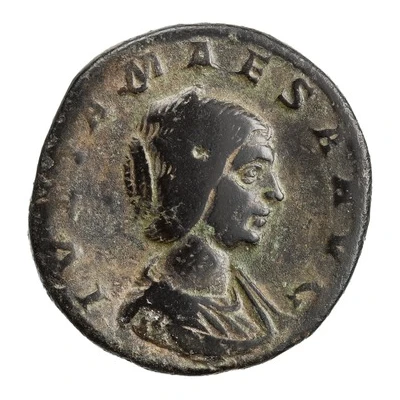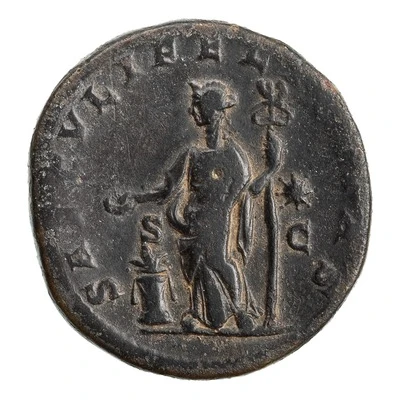Sestertius - Julia Maesa SAECVLI FELICITAS S C; Felicitas
| Bronze | 23.9 g | - |
| Issuer | Rome › Roman Empire (27 BC - 395 AD) |
|---|---|
| Emperor | Elagabalus (Sextus Varius Avitus Basianus) (218-222) |
| Type | Standard circulation coin |
| Years | 218-222 |
| Value | Sestertius (⅛) |
| Currency | Antoninianus, Reform of Caracalla (AD 215 – 301) |
| Composition | Bronze |
| Weight | 23.9 g |
| Shape | Round (irregular) |
| Technique | Hammered |
| Orientation | Variable alignment ↺ |
| Demonetized | Yes |
| Updated | 2024-10-05 |
| Numista | N#277114 |
|---|---|
| Rarity index | 100% |
Reverse
Felicitas, draped, standing left, sacrificing out of patera in right hand over lighted altar and holding caduceus in left hand.
Script: Latin
Lettering: SAECVLI FELICITAS S C
Unabridged legend: Saeculi Felicitas. Senatus Consultum.
Translation: Age of good fortune. Decree of the senate.
Comment
Source:Online Coins of the Roman Empire (OCRE)
Interesting fact
One interesting fact about this coin is that it features an image of Julia Maesa, who was a powerful woman in ancient Rome and played a significant role in shaping the Roman Empire's history. She was the mother of Emperor Elagabalus and grandmother of Emperor Alexander Severus, and her influence helped to secure their positions on the throne. The coin's design, which includes an image of Felicitas, the Roman goddess of good luck and prosperity, further highlights Julia Maesa's importance in Roman society.

